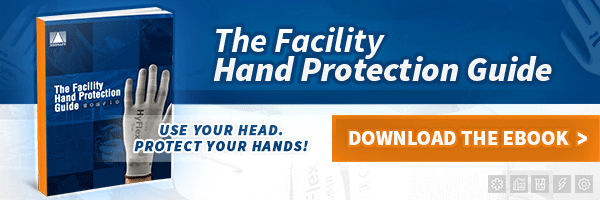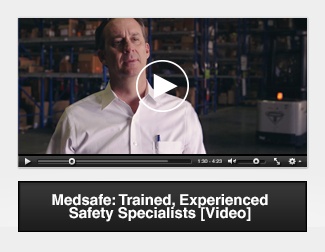Falling off of a ladder is never fun. Falling off of a ladder at work can be deadly. If your business requires fixed ladder access for maintenance, operations or other business activities, you must ensure your workers are safe when using those verticals. Many companies believe they achieve ladder safety by surrounding their fixed ladders with cages to reduce injuries from falls. However, the strongest ladder cage cannot overcome the force of gravity and employees can sustain additional injuries from contact with the cage on their way to the ground.
Updated standard addresses cages and fall arrest systems
To prevent injuries from ladder falls, many industrialists use fall arrest systems in conjunction with ladder cages to reduce or eliminate injuries that can occur when a worker falls from a fixed ladder. Be mindful that what we know of ladder safety is changing and going to continue to change over the next 20 years.
The Occupational Safety and Health Administration (OSHA) recently issued a final rule for Walking Working Surfaces (29 CFR 1910 subpart D and subpart I) that addresses slip, trip and fall hazards. Another change to this rule includes ladder systems and the added requirements for personal fall arrest systems (PFAS). This new ruling establishes a phase-out period of ladder wells and cages over the next 20 years, eventually replacing them altogether. It also provides guidance on general industry requirements for fall protection, making the requirements between general industry and construction more uniform.
Now, employers have more flexibility in choosing the right fall protection methods for their workers.
Ladder cages
In the event of a fall, the cage can slow the descent and perhaps give the worker an opportunity to grab hold of a rung or enclosure element to stop the fall. When workers are unable to stop their fall however, they will likely incur additional injuries due to the ladder cage.
Here is the timeline for changes to ladder cages through the updated standard:
- For caged, fixed ladders erected before November 19, 2018, employers have up to 20 years to install ladder safety or personal fall arrest systems (1910.28(b)(9)(i)(A))
- For new fixed ladders erected on or after November 19,2018, the employer must equip the ladder with a ladder safety or personal fall arrest system (1910.28(b)(9)(i)(B))
- For ladder repairs and replacements, when an employer replaces any portion of a fixed ladder, the replacement must be equipped with a ladder safety or personal fall arrest system (1910.28(b)(9)(i)(C))
- After November 18, 2036 all fixed ladders must be equipped with a ladder safety or personal fall arrest system (1910.28(b)(9)(i)(D))
- Employers must install personal fall arrest or ladder safety systems on new fixed ladders over 24 feet and on replacement ladders/ladder sections, including fixed ladders on outdoor advertising structures (2 years)
- Employers must ensure existing fixed ladders over 24 feet, including those on outdoor advertising structures, are equipped with a cage, well, personal fall arrest system, or ladder safety system (2 years)
- Employers must replace cages and wells (used as fall protection) with ladder safety or personal fall arrest systems on all fixed ladders over 24 feet (20 years).
Fall arrest systems
Fall arrest systems keep the employee continuously connected to the ladder or structure to prevent an uncontrolled free fall. There are three components to a fall arrest system:
- the anchor, which permanently or temporarily connects the system to the structure
- the body harness which is worn by the worker
- the connecting device, which can be one four types: a rope grab, a self-retracting lifeline; a standard lanyard, or a shock absorbing lanyard
Anchors must withstand the forces associated with a fall arrest when an attached worker falls. When employees routinely access sites at the top of fixed ladders with a height of 50 feet or greater, installation of permanent anchors is best practice. When there are minimal access requirements, temporary anchors may suffice.
The harness used to secure the worker to the fall arrest system must fit appropriately and should feature a front or sternal D-ring for connection to a ladder safety system (cable grab) as well as a back or dorsal D-ring which may be used not only for general fall arrest, but may alternatively be used for attaching to a stanchion or davit-mounted Self-Retracting Lanyard.
The choice of connecting device, which secures the harnessed worker to the installed anchor, can contribute to or reduce injuries sustained in a fall.
Cages, wells and cable climb systems are a thing of the past and are being replaced with vertical fall protection ladder systems. Especially for routinely accessed structures such as ladders, tower or tanks.
Advantages of choosing a Vertical Ladder Stanchion System:
- Overhead anchorages combined with self-retracting lanyards (SRL's) may reduce arrest distances to less than 24”
- Simple inspection requirements
- Different lengths available for different applications
- Can be used with standard dorsal D-ring harness
- Less complicated user training
- Can be used with existing SRL's
- Budget-friendly
Reduce injuries with fall arrest systems
On-the-job injuries occur every day and many of those are caused by falls from ladders. Every injured worker costs employers time and money from workers' compensation costs, legal fees, increased insurance rates and lost time and productivity. It is an employer’s responsibility to have an approved OSHA fall protection program in place to avoid these injuries.
OSHA estimates that the updates to the regulation will prevent 29 fatalities and 5,842 lost work days due to injury. And since falls are among the deadliest occupational hazards, the update couldn’t have come sooner!
In order to ensure workers are safe, employers must offer training on fall arrest systems and fall protection methods and retrain as necessary. It’s also important to that workers can accurately identify fall hazards in order to use the right fall protection equipment. Workers’ lives depend on having the right equipment for the job; make sure you have reviewed the recent updates in fall protection safety!








